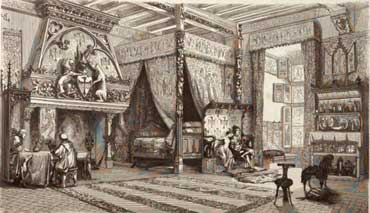Step into a world of chivalry, romance, and authenticity with medieval times decorations. In this article, we’ll explore various elements that can bring the allure of the Middle Ages into your home or event space. From fabrics to furniture, lighting to table settings, the charm of medieval design can transform any environment into a captivating experience.
Understanding Medieval Decor: A Historical Overview
The term “medieval” spans several centuries, primarily between the 5th and 15th centuries. The decorations of these times were not only functional but held significant symbolic value. Understanding the roots of these decorations can enhance your appreciation and application of the style today.
Key Characteristics of Medieval Decorations
- Materials: Natural materials like wood, stone, and metal were prevalent.
- Colors: Rich, deep colors such as burgundy, forest green, and gold were favored.
- Textures: Tapestries and textiles with intricate patterns were commonly used.
Famous Styles Within Medieval Decor
| Style | Description | Time Period |
|---|---|---|
| Gothic | Characterized by pointed arches and intricate designs. | 12th – 16th Century |
| Romanesque | Features rounded arches and heavy stonework. | 9th – 12th Century |
| Tudor | Known for its half-timbered buildings and ornate decorations. | 15th – 17th Century |
Incorporating Medieval Decor Into Your Space
Whether you are designing a home, hosting a themed event, or creating a medieval marketplace, understanding how to incorporate medieval decor can truly elevate the atmosphere.

Focal Points for Medieval Decor
1. Furniture Choices
Medieval furniture tends to be sturdy and functional. Here are some common types:
- Wooden Tables: Look for large, rectangular dining tables made from dark wood.
- Benches: Replace standard chairs with benches for a communal feel.
2. Textiles and Fabrics
Tapestries, velvet drapes, and linen tablecloths can add a luxurious touch. Consider:
- Tapestries: Hang rich tapestries depicting medieval scenes.
- Cushions and Throws: Use fabrics like brocade or damask on seating areas.

3. Lighting Options
Lighting plays a crucial role in setting the mood. Some options include:
- Candelabras: Opt for ornate candle holders for a warm glow.
- Lanterns: Use wrought-iron lanterns for authentic medieval touches.
DIY Medieval Decorations
Creating your own medieval decorations can be a rewarding experience. Here are some ideas to inspire you:

1. Tapestry Wall Art
Rent a loom or buy a fabric that speaks of medieval themes, and create your own tapestry to hang on the wall. This can add personal flair and authenticity.
2. Handmade Shields and Banners
Using cardboard and paint, create shields or banners. These can be decorated with family crests or medieval symbols.

3. Rustic Centerpieces
Gather items like dried flowers, branches, and candles to create rustic table centerpieces reminiscent of medieval banquets.
Common Mistakes to Avoid in Medieval Decorating
While it can be exciting to dive into medieval décor, there are common pitfalls that can detract from your overall theme:
- Too Much Modernity: Avoid mixing too many modern elements; it may disrupt the authenticity.
- Overlooking Scale: Consider the scale of items relative to the space; oversized furniture in a small room can be overwhelming.

Pros and Cons of Medieval Home Decor
| Pros | Cons |
|---|---|
| Creates a unique, inviting atmosphere | Can be costly depending on authentic materials |
| Rich in history and character | May be difficult to source specific items |
| Encourages creativity with DIY projects | Not suitable for every home style |
Medieval Events: Getting the Decorations Right
Hosting a medieval-themed event can be a fantastic way to immerse your guests in history. Below are tips to get the decorations right.

Choosing the Right Venue
Selecting a venue that echoes the medieval theme can set the tone. Consider:
- Historic buildings, castles, or banquet halls.
- Outdoor settings with rustic backdrops.
Table Settings for a Medieval Feast
A medieval feast is all about the table settings. Make it authentic by considering:
- Large wooden platters for food.
- Tankards for drinks.
- Natural elements like herbs or flowers as centerpieces.
FAQs About Medieval Times Decorations
What materials are best for medieval decor?
The best materials include wood, stone, metal, and heavy fabrics like tapestry or velvet. These elements evoke the authentic feel of medieval times.
Where can I find medieval decorations?
Medieval decorations can be found at specialty shops, online marketplaces, or even thrift stores. For DIY projects, craft stores may have suitable materials.
How can I create an authentic medieval atmosphere?
Focus on the right furniture, textiles, and lighting. Use deep colors and natural materials to enhance the medieval theme.
Conclusion: Embrace the Charm of Medieval Decor
Incorporating medieval times decorations into your home or an event can create a captivating atmosphere full of history and charm. Whether you choose to invest in authentic pieces or embark on DIY projects, the key is to embrace the spirit of the medieval era. Open up your space to companionate storytelling and a rich visual experience that will mesmerize your guests.